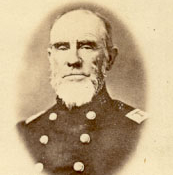James H. Cravens facts for kids
James Harrison Cravens (born August 12, 1802 – died December 4, 1876) was an important person from Indiana. He served as a U.S. Representative, which means he helped make laws for the entire country. He was also a second cousin to another well-known politician, James Addison Cravens.
Contents
Early Life and Education
James Harrison Cravens was born on August 12, 1802, in Harrisonburg, Virginia. As a young man, he decided to study law. He worked hard and became a lawyer in 1823. He started his law practice right there in Harrisonburg, Virginia.
Moving to Indiana
In 1823, James Cravens moved to Franklin, Pennsylvania, where he continued to work as a lawyer. A few years later, in 1829, he moved again, this time to Madison, Indiana. In Indiana, he started farming in addition to his law work.
He became involved in Indiana's government. In 1831 and 1832, he was a member of the State House of Representatives. This meant he helped create laws for the state of Indiana. In 1833, he moved to Ripley County, Indiana, where he kept practicing law and managing his farm. He also served in the State Senate in 1839, continuing his work in state government.
National Politics and War Service
James Cravens was elected to the United States Congress in 1841. He was a member of the Whig Party. He served in Congress until 1843, representing Indiana and helping make laws for the whole country.
Later, in 1852, he tried to become the Governor of Indiana for the Free Soil Party, but he did not win. He also ran for Attorney General of Indiana in 1856, but was not successful.
During the American Civil War, James Cravens bravely served his country. He was a lieutenant colonel in the Eighty-third Regiment, Indiana Volunteer Infantry. This means he was a leader of many soldiers from Indiana. During a famous event called Morgan's Raid, he and his soldiers were captured by the enemy.
Later Life and Legacy
James Harrison Cravens passed away on December 4, 1876, in Osgood, Indiana. He was buried in Versailles Cemetery, located in Versailles, Indiana. He is remembered for his service to both his state and his country, as a lawyer, a farmer, and a politician.


